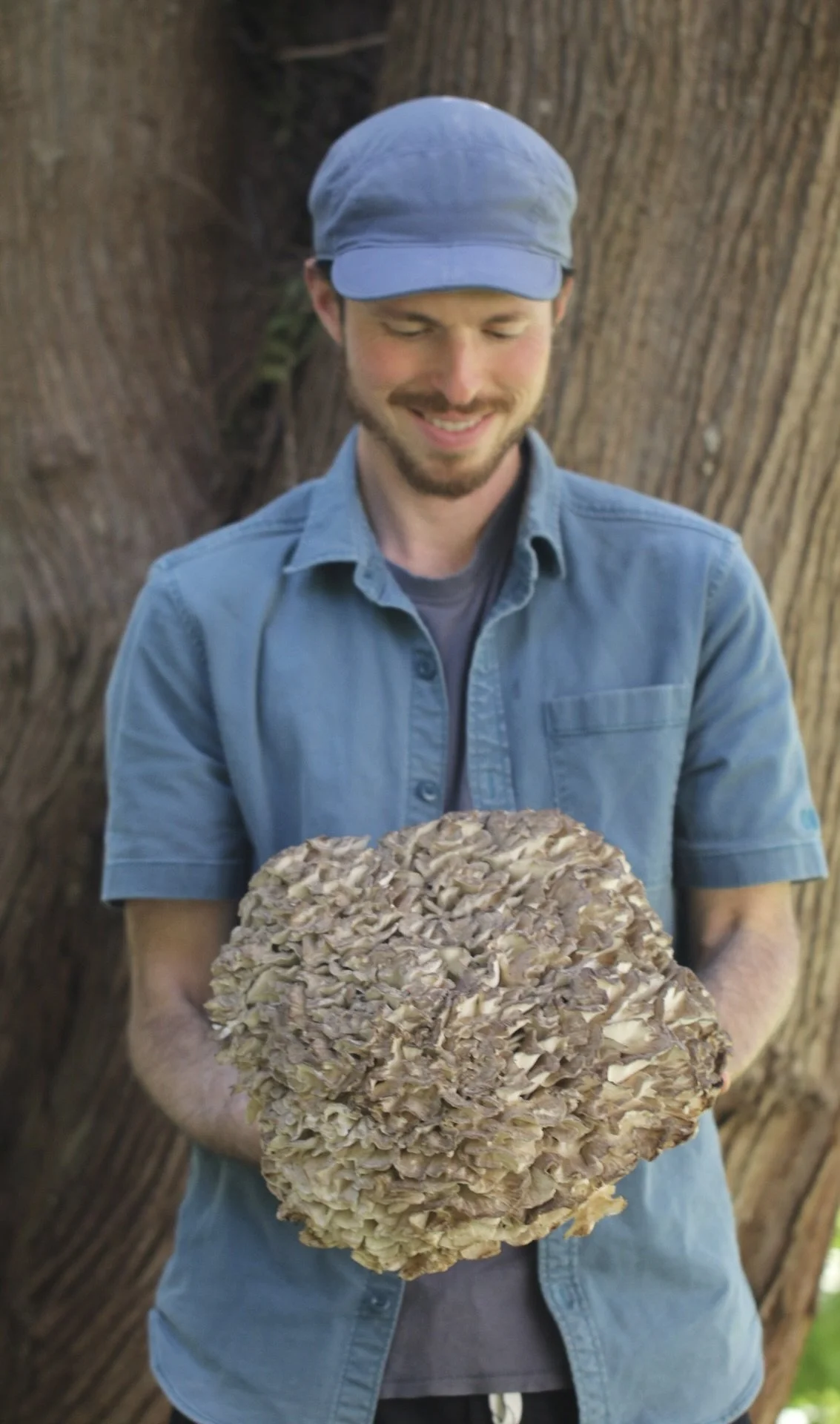Humbled by Hen of the Woods
As I approach my most reliable maitake tree – a hollowed giant, long gone but still producing – my steps slow to prolong the riveting suspense. This decaying oak let me down last year, but then again, so did my other trees ... chalk it up to a bad season. It’s only early September, and a bit drier of late, but this cool, misty morning is full of promise.
Just when I can’t stand the anticipation any longer, an indisputable hen – my first of the season – pops into view on the downhill side of the tree, nestled up cozily at the foot of its massive trunk. I bound joyfully uphill, where two more maitake await me, tight and brain-like in form. These baby hens are on the verge of a growth spurt, in which they’ll more than quadruple in size in less than a week’s time. Fortunately, this remarkable tree is just a short drive from my village home, so I can keep an eye on it and harvest at the peak of its freshness, before it becomes a slug and pill bug hotel.
Maitake, or hen of the woods (Grifola frondosa), is having a September for the history books, on the heels of a tremendously disheartening 2023 season. After coming up empty last fall, I wondered if my favorite oaks were slowing down, but it seems they were only conserving stamina, preparing for an epic 2024. Of the six local hen trees that I check on each fall, five have already flushed heavily this September. Last fall, entering October, I was 0 for 6. Two trees in particular have over-performed in stunning fashion this year, producing hens that are lightyears beyond those of previous seasons in both size and aesthetic perfection.
Eight days after my early hen find, I return to that same gnarled tree, concerned I might have let too much time elapse and wondering whether my trophy might already be reduced to rot. Delightfully, I find the trio of maitake has exploded in size, but has not yet visibly declined in quality. Two of the hens are so swollen that they have seemingly fused into one colossal fruiting body. Thankfully, unlike chicken of the woods – which is at its best when young and tender – maitake retains its satisfying texture and nourishing flavor at maturity.
I wrap my palms around the base of the most mature hen, leaving the other two in the ground to continue roosting and dropping spores. With a gentle wiggle, the maitake easily and cleanly detaches from the ground at the bottom of its central stalk. The hard part, it turns out, is picking up this behemoth and hauling it safely out of the woods. This bug-free hen is not just voluminous – it is remarkably dense and muscled, its heft unable to be contained by the full-size paper grocery bag I have stashed in my pack. Improvising, I remove my flannel shirt and wrap it snugly around the singular specimen, hoisting it up to my chest and flexing as I haul it proudly out of the woods. I bushwhack cautiously downhill, struggling not to fall (or worse, drop the spectacular hen) as I make the short but steep return journey to my vehicle. There, it finds a temporary home in my five-year-old’s empty car seat, which happens to fit the maitake like a charm.
Arriving home, I attempt to weigh the maitake on our kitchen scale but get an ‘error’ message. I run upstairs to grab the bathroom scale, and find it weighs in at fourteen hulking pounds. Storage emerges as the next challenge, and I need to remove a shelf just to fit the hen – which, let’s face it, is more akin to a Thanksgiving turkey – in my refrigerator.
Now, our family is in hen heaven, savoring maitake for breakfast (hen omelets; ham and hen), lunch (fried rice with hen), and dinner (roasted chicken with, you guessed it ... a side of hen). There may be no other wild mushroom that is so versatile, pairing equally well with heavy cream, butter, olive oil, or soy sauce; delightful sautéed, roasted, or braised. After a week of such decadence, ample hen is left, still in surprisingly good form. Only trouble is, now there’s not much room for anything else in our fridge. Soon, the remaining hen will make the journey from fridge to freezer, where it will provide enough sustenance and umami flavors to last us through a Vermont winter.

